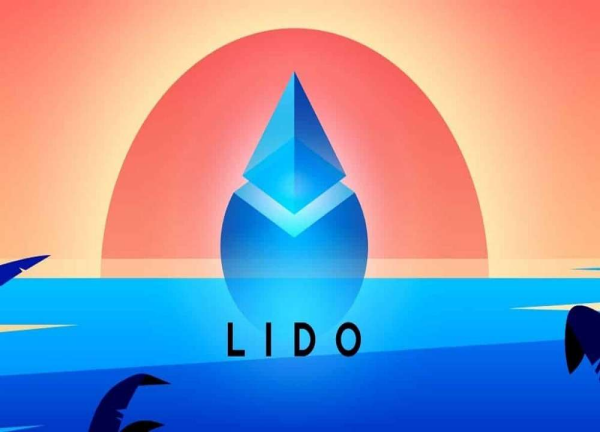
What is Lido Finance?Lido Finance is a non-custodial, liquid Stake service protocol designed to provide users with liquid staking solutions. The protocol provides liquidity for pledged assets by issuing tokenized derivatives. Lido Finance was founded in 2020 to provide a liquidity staking solution for Ethereum 2.0, allowing users to stake their ETH with no lock-in or minimum deposit.
The development and current situation of Lido
Multi-chain support: Currently, Lido can provide staking income and release the liquidity of pledged tokens for five chains, including:
Ethereum 2.0 (Token ETH)
Terra (token LUNA)
Solana (Token SOL)
Kusama (Token KSM)
Polygon (Token MATIC)
Lock in assets and market position
According to Lido’s official website, as of April 24, 2022, the assets locked on Lido reached US$18.3 billion, including:
ETH locked in $10.6 billion
LUNA locks in $8.11 billion
SOL locks in $373 million
KSM locks in $3.17 million
MATIC locks in $13.93 million
The total lock-up volume (TVL) of the Lido protocol ranks second in the lock-up rankings of the professional DeFi website DefiLlama, second only to the Curve protocol.
ETH2.0 pledge situation
According to data from Coingecko, the market value of ETH2.0 equity tokens is approximately US$11.1 billion, while the market value of stETH on Lido is as high as US$10.3 billion (Lido pledges ETH 1:1 to generate equity tokens stETH). Currently, there are 3.3 million ETH pledged on the Lido protocol, accounting for 28.6% of the total pledged amount of ETH2.0.
Team and financing status: Founding team: Lido’s founding team mainly comes from P2P Validator, a professional non-custodial staking platform that supports users to pledge tokens with more than 20 POS mechanisms, including ETH, DOT, SOL, ATOM, etc. Founding members of Lido include:
Konstantin Lomashuk: The founder of P2P Validator and an early BTC investor. In 2015, he founded the Satoshi Fund, which focuses on blockchain investment.
Vasiliy Shapovalov: CTO of P2P Validator.
Kasper Rasmussen: CMO of P2P Validator, formerly Marketing Director of Bitfinex.
Financing process
Lido Finance has completed three rounds of financing in total:
December 2020: Lido Finance closed $2 million in funding from firms including Semantic Ventures, as well as individuals including MakerDAO’s Rune Christensen, Aave’s Stani Kulechov, and Synthetix’s Kain Warwick.
April 2021: Lido raised $75 million by selling tokens, which will be released linearly in 12 months after a one-year lock-up period. The lead investor is Paradigm, and other investors include Three Arrows Capital, DeFiance Capital, Jump Trading, Alameda Research, and others.
March 4, 2022: a16z announced a $70 million investment in Lido Finance and plans to use Lido to stake an undisclosed portion of the ETH held by a16z Crypto on the Ethereum Beacon Chain.
Product and track analysis
Advantages of the POS model: Lido's ecology is a POS (Proof of Stakeholder) model. Compared with the POW (Proof of Work) model, from the perspective of energy conservation, emission reduction and environmental protection, the POS model is the general trend. The annualized return of ETH staking on the Lido platform is 3.9%. Although it is slightly lower than the 4.6% annualized return of staking on the Ethereum official website, due to the super liquidity of stETH and the large institutional investors' optimism about the huge price of ETH 2.0 POS after the merger Potential, the amount of ETH pledged on Lido is increasing.
Lido’s Advantage: At today’s prices, the assets staked on Lido are worth more than $10 billion and are spread across 76,000 crypto wallets, according to Lido’s co-founder. Lido is undoubtedly the leader of ETH2.0.
ETH2.0 is an open upgrade project, and any organization that meets the threshold can participate. For example, major exchanges such as Binance, Coinbase, and Ethereum have their own ETH2.0 pledge entrances. So why did the funds choose Lido?
Solve the threshold problem of ETH2.0
Individuals who want to participate in ETH2.0 need to pledge at least 32 or 32 times of Ethereum. At the current price of ETH, they also need nearly 82,000 yuan; secondly, they cannot submit it before the completion of ETH2.0 (after completion, they will also need to wait for nearly one month) month); becoming an ETH2.0 node also requires additional equipment and expertise, and you will be fined if the equipment goes offline.
The existence of pledge agreements such as exchanges is to solve the above threshold problems. On the one hand, it can lower the threshold of user pledge quantity; on the other hand, it can solve the threshold of equipment procurement, maintenance and related professional knowledge through centralized management. However, problems of lack of liquidity and opaque accounts still exist.
Lido’s solution
When staking ETH on the Ethereum Beacon Chain using Lido, the user will receive a token, stETH, which represents the user's ETH on the Ethereum Beacon Chain at a 1:1 ratio. Whenever users receive staking rewards, stETH will also increase accordingly, and users can trade stETH to gain liquidity at any time.
Investment prospects of LDO currency: Market demand: As the governance token of the Lido protocol, LDO currency holders can participate in the governance decisions of the protocol, including rate adjustments, product updates, etc. As the Lido platform develops and the number of users increases, the demand for LDO coins will continue to grow.
Risks and Challenges: Although Lido occupies a leading position in the ETH2.0 staking market, it still faces competition from other staking platforms and exchanges. In addition, rapid changes in blockchain technology and crypto markets may also create uncertainty.
future outlook
With the advancement of ETH2.0 and the popularity of the POS model, Lido Finance’s market position will be further consolidated. As its governance token, LDO currency is expected to gain more support and recognition in terms of market demand and application scenarios in the future.
Conclusion: As the leader in the ETH2.0 staking market, Lido Finance’s non-custodial, liquid staking service provides users with convenient staking solutions. With the development of blockchain technology and the popularity of the POS model, the future prospects of Lido and LDO coins are worth looking forward to.